Stanford Law Faculty on Justice Sandra Day O’Connor’s Legacy
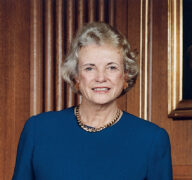
Justice Sandra Day O’Connor, LLB ’52 (BA ’50), the first woman justice on the U.S. Supreme Court, died on Friday, December 3. She was 93. Appointed by President Ronald Reagan in 1981, she would go on to write 645 opinions, including landmark decisions upholding gender equality (1982’s Mississippi University for Women v. Hogan), the right to abortion (1992’s Planned Parenthood v. Casey, coauthored with Justices Kennedy and Souter), and affirmative action (2003’s Grutter v. Bollinger). At SLS, O’Connor was an editor on the Stanford Law Review and reportedly received a marriage proposal from her classmate William Rehnquist, LLB ’52 (BA/MA ’48). To date, the SLS class of ’52 is the only law school class in history to have produced two Supreme Court justices. Here, Stanford Law School faculty reflect on her legacy.
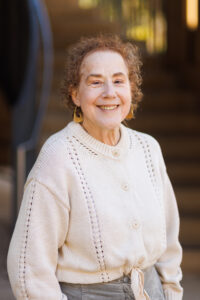
Deborah R. Hensler, Judge John W. Ford Professor of Dispute Resolution
I first met Justice O’Connor when I was still at RAND and the RAND Vice-President arranged for her to speak to me about our research on tort litigation. This was likely in the late ’80s when the tort reform battles were raging in Congress. I recall being impressed by the Justice’s questions and attentiveness to my responses—I think I had expected the meeting to be more pro forma, agreed to by her for relational, rather than substantive, reasons. I still recall sitting opposite her in what I recall as a very ladylike sitting room in her chambers, which was decorated with Western art. (I had met previously with Justice Warren Burger and recall also thinking that her questions were more intelligent than his.) Several years later, Justice O’Connor called me to ask questions about our research on punitive damages and I remember that again she asked sensible questions about our research results. However, my favorite memory of the Justice is from a different occasion: I was speaking at a conference on gender bias in the federal courts, presenting results of research that I had conducted for the 9th Circuit Gender Bias Task Force, of which I was a member. As I recall, Justice O’Connor delivered a keynote address at the conference. During a break, I headed for the ladies’ restroom. As usual in public venues, there were insufficient facilities for women (a bit ironic, considering the subject of the conference), and a long line. Justice O’Connor happened to be in front of me on that line. As we waited impatiently for people to emerge from the stalls, Justice O’Connor stepped forward toward one of the stalls, and bent down—as many of us have done—to check whether the stall was actually occupied. And I thought, for the first time, that there was someone like me on the Supreme Court bench.
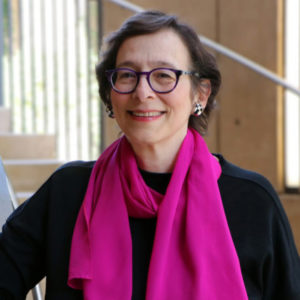
Pamela S. Karlan, Kenneth and Harle Montgomery Professor of Public Interest Law and Co-Director of the Supreme Court Litigation Clinic
In 1979, Bob Woodward and Scott Armstrong could publish a book about the Supreme Court and title it The Brethren. Justice O’Connor’s appointment changed that, and so much else.
Justice O’Connor was a first, of course: the first women to sit on the Court. But, at least for now, she was also a last: the last Justice to have held elective public office (as a state senator, and first female majority leader of a state senate). Her political experience was reflected in her sophisticated opinions—sometimes for the Court and sometimes in separate writing—regarding pivotal issues in the law of democracy, ranging from political gerrymandering to minority vote dilution to excessive race consciousness in the political process. (And in a delightful article on The History of the Women’s Suffrage Movement, 49 Vand. L. Rev. 657 (1996).)
Justice O’Connor understood the difference that her presence on the Supreme Court made, not only because she was so often the swing vote, but because she was a woman. She was too politic to say this directly, but her tribute to her colleague Thurgood Marshall (Thurgood Marshall: The Influence of a Raconteur, 44 Stan. L. Rev. 1217 (1992)) elegantly made the point.
And that point came through especially in Justice O’Connor’s influential, but now regrettably abandoned, opinion for the Court in Grutter v. Bollinger, 539 UU.S. 306 (2003), which upheld the University of Michigan Law School’s affirmative action plan with these words:
In order to cultivate a set of leaders with legitimacy in the eyes of the citizenry, it is necessary that the path to leadership be visibly open to talented and qualified individuals of every race and ethnicity. All members of our heterogeneous society must have confidence in the openness and integrity of the educational institutions that provide this training.
It is a measure of what we have lost that the current Court has turned its back both on her work with respect to affirmative action and with respect to women’s right to control the decisions whether and when to bear a child. But her work will not be forgotten.
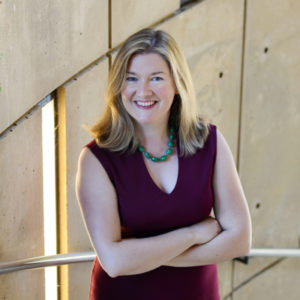
Bernadette Meyler, JD ’03, Carl and Sheila Spaeth Professor of Law and Associate Dean for Research and Intellectual Life
The legacy of Justice O’Connor was a powerful force for students involved in the Stanford Law Review when I was a member. There was much lore surrounding her time at the journal, from her contemporaneity with Justice Rehnquist to how she met her husband while editing. It also felt to me that it was no accident that the first women to serve as an Associate Justice on the U.S. Supreme Court had attended Stanford, one of the few universities that were open to both men and women from their founding. I only had the pleasure of spending time with Justice O’Connor once, when I coordinated her 2007 visit to Cornell Law School as our Distinguished Jurist in Residence. Although she was already retired at the time, Justice O’Connor readily engaged in a remarkable lineup of events, including a warm and enlightening public “fireside chat.” I remember most vividly though that she arrived almost directly from a day of fly fishing at a dinner for her hosted by the women on the faculty and one would never have guessed from her graciousness and conversational acumen that she had not been spending the day preparing for the event!
In terms of her jurisprudence, Justice O’Connor was a moderating force at a time when the Supreme Court was already becoming quite divided. Her legacy is perhaps most evident from two cases for which she was a crucial vote, and in which she wrote at least in part the prevailing opinions—Grutter v. Bollinger (2003), arising from the University of Michigan law school’s affirmative action program and Planned Parenthood v. Casey (1992), affirming a constitutional right to abortion. The Supreme Court has departed from these precedents within the past two years, ruling affirmative action unconstitutional in the Students for Fair Admissions cases (2023) and holding that abortion is not constitutionally rooted in Dobbs v. Jackson Women’s Health Organization (2022). While abandonment of these precedents might suggest that Justice O’Connor’s influence has waned, her defenses of both affirmative action and abortion were at least in part responsible for sustaining their constitutional grounding for several more decades.
In teaching constitutional law and the cases in which Justice O’Connor played a major role, I have most appreciated her tendency to consider the real-world impact of legal decisions. Sometimes this approach led to balancing tests or standards that have been criticized as overly vague. This may be because it is difficult to fully assess the impact of legal doctrine on the ground, but I believe that O’Connor’s efforts represented a step in the right direction. For example, in thinking about the establishment of religion and activities prohibited under the First Amendment, she examined whether a particular religious display would suggest an endorsement of religion by the government in the mind of a reasonable observer (Lynch v. Donnelly (1984). In the Casey decision, the plurality that O’Connor co-authored invalidated a spousal notification requirement for abortion decisions, relying on substantial social science and other evidence about the gravity of the threat of domestic violence that would ensue. This acknowledgment of the connection between abortion and domestic violence has paved the way for further scholarly work and advocacy in that area.
Justice O’Connor’s voice on the Supreme Court has already been missed since her retirement, but the legacy of her approach lives on in many arenas of scholarship, advocacy, and judging.
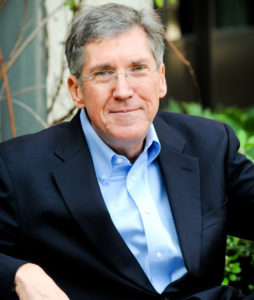
Barton “Buzz” Thompson, JD/MBA ’76, Robert E. Paradise Professor of Natural Resources Law

Robert Weisberg, JD ’79, Interim Dean, Edwin E. Huddleson, Jr. Professor of Law, and Faculty Co-Director, Stanford Criminal Justice Center
Justice O’Connor took the seat of Justice Potter Stewart. When he announced his retirement, I was just completing my year as his clerk, so I took a special interest in who would be his successor. What delight for me and honor to Stanford Law School when I learned the new justice was one of our own. And just a year later, when I was a junior professor at SLS, I was delighted to make Justice O’Connor’s acquaintance when she was the commencement speaker for the university, and also made an appearance at the law school ceremony. From this introduction, I was deeply touched by her evident intellectual and moral grace and empathetic professional judgment, all well proved by her wonderful service on the Court.
